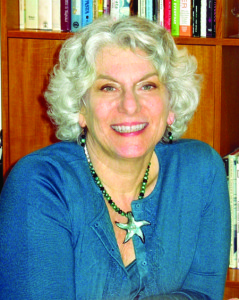with Aviva Shiff Boedecker
At the Northern California Planned Giving Council’s Annual Conference in May, Sharpe Group Senior Consultant Aviva Shiff Boedecker participated in a panel discussion on marketing trends in planned giving. The following is a summary of the questions the panel received along with her responses.
Q: Are there any absolute “must dos” in planned giving marketing?
A: Absolutely. First and foremost, make sure your donors know planned gifts are welcome! This is a basic but essential step to building your planned giving program. Take advantage of every opportunity to mention the importance bequests and other planned gifts play in your organization’s overall financial picture.
Planned giving messages are often part of a special communications strategy, but they should also be incorporated in alumni communications, programs for performing arts events and listed as checkboxes on current fund appeals and other general publications.
At the same time, make sure you have a firm understanding of the demographics and lifecycle of a typical planned gift donor, including at what age donors typically execute their last will.
Studies have shown that the average age at which donors make the will that actually serves to leave funds for charitable purposes is 79. Given the fact that most fundraisers are asked to operate within a limited budget, it makes sense to target marketing efforts to the appropriate audience—donors aged 70 and older. When designing materials to appeal to this demographic cohort, remember that older persons tend to respond well to printed materials utilizing a larger font that is easy to read.
Q: Are there any “must not dos” in a planned giving marketing program?
A: Don’t overlook donors of smaller amounts who have been loyal supporters through the years. Planned gifts may offer these donors an opportunity to make a larger gift than they had ever thought possible, and such donors are often the source of the largest planned gifts each year.
Don’t get sidetracked by bells and whistles. Most planned gifts take the form of simple bequests and beneficiary designations from retirement accounts, life insurance policies and other financial accounts. Other planned gift arrangements are also important, but make sure to first cover the basics.
Q: How should a planned giving department measure success? How should management measure return on investment?
A: Following up with those who express interest, making calls and scheduling visits are all necessary and important activities, but in the end one must differentiate quality from quantity. It is better to have a few quality meetings with 80-year-olds than a lot of superficial interactions with 40-year-olds who may not be true prospective planned giving donors for 30 years or more.
Along those lines, a mailing or e-communication that generates a few quality responses from constituents age 70 and above should be considered more successful than a communication that results in a large number of responses from people in their 40s and 50s. A high response rate from this demographic will re- quire you to spend a lot of time following up on inquiries and could possibly result in decades of stewardship before any planned gift is received, thereby reducing the time you have available to spend with more immediate planned gift prospects.
Ask yourself if your goal is to realize income for your organization through matured gifts as quickly as possible or simply to impress higher-ups with a fluffed-up expectancy list and a large legacy society. Planned giving does have a long time horizon, but it need not be as long as some might think. At some point you have to see funds coming in the door.
Q: Who should be my target audience?
A: As I mentioned previously, focus your efforts on older donors, including older recently lapsed donors. If a donor gave regularly for a long time and then stopped, find out why. Contacting these donors is simply good stewardship, and it may open the door to a conversation about future planned gifts.
Q: What new trends have you noticed in planned giving marketing?
A: Organizations that significantly reduced the use of printed materials in the mid-to-late 2000s and instead relied heavily on e-marketing are in many cases returning to print. Many of those who relied on all e-marketing during the Great Recession quickly realized they were not reaching their target audiences, as only a minority of persons over age 70 were online at that point.
While more and more seniors have begun using the Internet, many still do not. According to the Pew Research Internet Project, just 47 percent of persons 75 to 79 and only 37 percent of those 80 and older are online today. Those numbers fall to 34 percent and 21 percent, respectively, where high-speed broadband access is concerned. This is significant when one considers that the average age of gift annuitants is 79 years old, according to a recent study published by the American Council on Gift Annuities.
By relying too heavily on e-marketing, these organizations were inadvertently cutting off many donors who were at the prime age for planned gifts. After seeing their bequest and other planned gift production decline, many such organizations have recommitted to sending printed communications to their older donors. (For more on this topic, see “What Goes Up Must Come Down” in the April 2014 issue of Give & Take.)
In order to reach all members of your target audience, the key is to communicate with donors in multiple ways—in person and by phone, mail, email and other print and digital media.
Q: What is the single most important point you would like to convey about planned giving marketing?
A: Make sure your message is accessible to those you want to see it. Choose a format that your prime planned gift prospects will feel comfortable with and make sure the colors, designs and fonts you select will make your message attractive and legible to your target audience.
Aviva Shiff Boedecker is a senior consultant in Sharpe Group’s San Francisco office.


